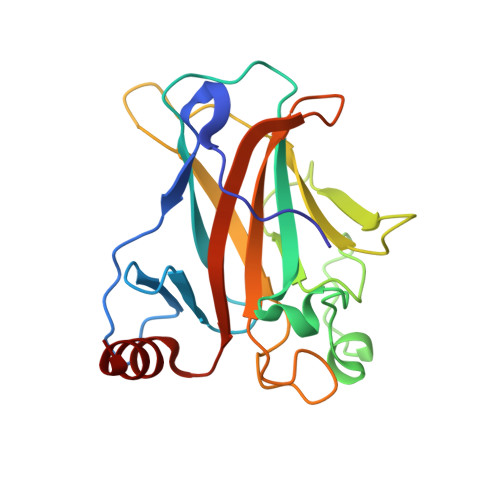The Crystal Structure of the R280K Mutant of Human p53 Explains the Loss of DNA Binding.
Gomes, A.S., Trovao, F., Andrade Pinheiro, B., Freire, F., Gomes, S., Oliveira, C., Domingues, L., Romao, M.J., Saraiva, L., Carvalho, A.L.(2018) Int J Mol Sci 19
- PubMed: 29652801
- DOI: https://doi.org/10.3390/ijms19041184
- Primary Citation of Related Structures:
6FF9 - PubMed Abstract:
The p53 tumor suppressor is widely found to be mutated in human cancer. This protein is regarded as a molecular hub regulating different cell responses, namely cell death. Compelling data have demonstrated that the impairment of p53 activity correlates with tumor development and maintenance. For these reasons, the reactivation of p53 function is regarded as a promising strategy to halt cancer. In the present work, the recombinant mutant p53R280K DNA binding domain (DBD) was produced for the first time, and its crystal structure was determined in the absence of DNA to a resolution of 2.0 Å. The solved structure contains four molecules in the asymmetric unit, four zinc(II) ions, and 336 water molecules. The structure was compared with the wild-type p53 DBD structure, isolated and in complex with DNA. These comparisons contributed to a deeper understanding of the mutant p53R280K structure, as well as the loss of DNA binding related to halted transcriptional activity. The structural information derived may also contribute to the rational design of mutant p53 reactivating molecules with potential application in cancer treatment.
- LAQV-REQUIMTE, Laboratório de Microbiologia, Departamento de Ciências Biológicas, Faculdade de Farmácia, Universidade do Porto, 4050-313 Porto, Portugal. anasarag4@gmail.com.
Organizational Affiliation:

















